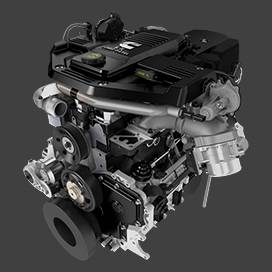Dec . 03, 2024 18:39 Back to list
16.5x6 brake drum
Understanding the Importance of the 16.5x6 Brake Drum
When it comes to the performance and safety of commercial vehicles, the brake system plays a critical role. One of the key components of this system is the brake drum, particularly the 16.5x6 size which is prevalent in various heavy-duty trucks and buses. Understanding the design, functionality, and maintenance of the 16.5x6 brake drum is essential for vehicle owners, operators, and fleet managers alike.
What is a Brake Drum?
A brake drum is a cylindrical component in a braking system that houses the brake shoes. When the driver applies the brakes, hydraulic pressure forces the brake shoes against the inner surface of the drum, creating friction that slows down or stops the vehicle. The 16.5x6 designation refers to the drum's diameter and width—specifically, it has a diameter of 16.5 inches and a width of 6 inches. This size is suitable for heavy-duty applications where substantial stopping power is needed.
The Role of the 16.5x6 Brake Drum in Commercial Vehicles
Commercial vehicles, such as trucks and buses, are tasked with transporting heavy loads and navigating on both city streets and highways. The 16.5x6 brake drum is engineered to handle the immense weight and kinetic forces that come with such operations. The larger size provides increased surface area for friction, allowing more effective heat dissipation during braking. This is essential for preventing brake fade, a condition where the brakes lose efficiency due to overheating.
Furthermore, the design of the 16.5x6 brake drum accommodates various applications, from standard freight transport to specialized vehicles. It can be used with different types of brake shoes and systems, making it a versatile choice in the trucking industry.
16.5x6 brake drum

Material and Design Considerations
Most brake drums are manufactured from cast iron due to its superior strength and thermal properties. As the vehicle brakes, the drum experiences significant wear and tear, generating heat in the process. High-quality 16.5x6 brake drums are made with advanced materials and technologies that enhance durability and improve performance. Some modern drums may also include features like vented designs to improve cooling efficiency, further extending their lifespan and reliability.
Maintenance and Longevity
To ensure optimal performance, regular maintenance of the brake drum is vital. Inspecting the brake drum for signs of wear, such as cracks, scoring, or warping, can prevent catastrophic failures. Brake drums should also be cleaned and resurfaced if necessary to maintain an effective braking surface. Fleet managers should establish a maintenance schedule that includes regular checks and replacements based on the vehicle's usage and load conditions.
The lifespan of a 16.5x6 brake drum will depend on various factors, including driving habits, load weights, and environmental conditions. Generally, with appropriate maintenance, a good quality brake drum can last for many miles, but neglect can lead to premature failures and costly repairs.
Conclusion
The 16.5x6 brake drum is a vital component in the safety and functionality of commercial vehicles. Its robust design and ability to handle heavy workloads make it a popular choice in the trucking industry. By understanding its role, being aware of the maintenance practices necessary to extend its life, and recognizing the signs of wear, operators can ensure that their braking systems remain reliable and effective. Prioritizing the condition of the brake drum not only enhances vehicle safety but also contributes to overall operational efficiency, helping businesses run smoothly and safely on the roads.
-
Scania Brake Drums: OEM Quality for Optimal Safety & Durability
NewsAug.16,2025
-
R.V.I: Advanced Remote Visual Inspection for Precision
NewsAug.15,2025
-
Discover HYUNDA: Innovative Vehicles, Equipment & Solutions
NewsAug.14,2025
-
R.V.I: Unlock Advanced Insights & Real-time Performance
NewsAug.13,2025
-
Kamaz Brake Drum: Durable & Reliable for Heavy Duty Trucks
NewsAug.12,2025
-
Heavy Duty Iveco Brake Drum - Premium Quality & Safety
NewsAug.11,2025
